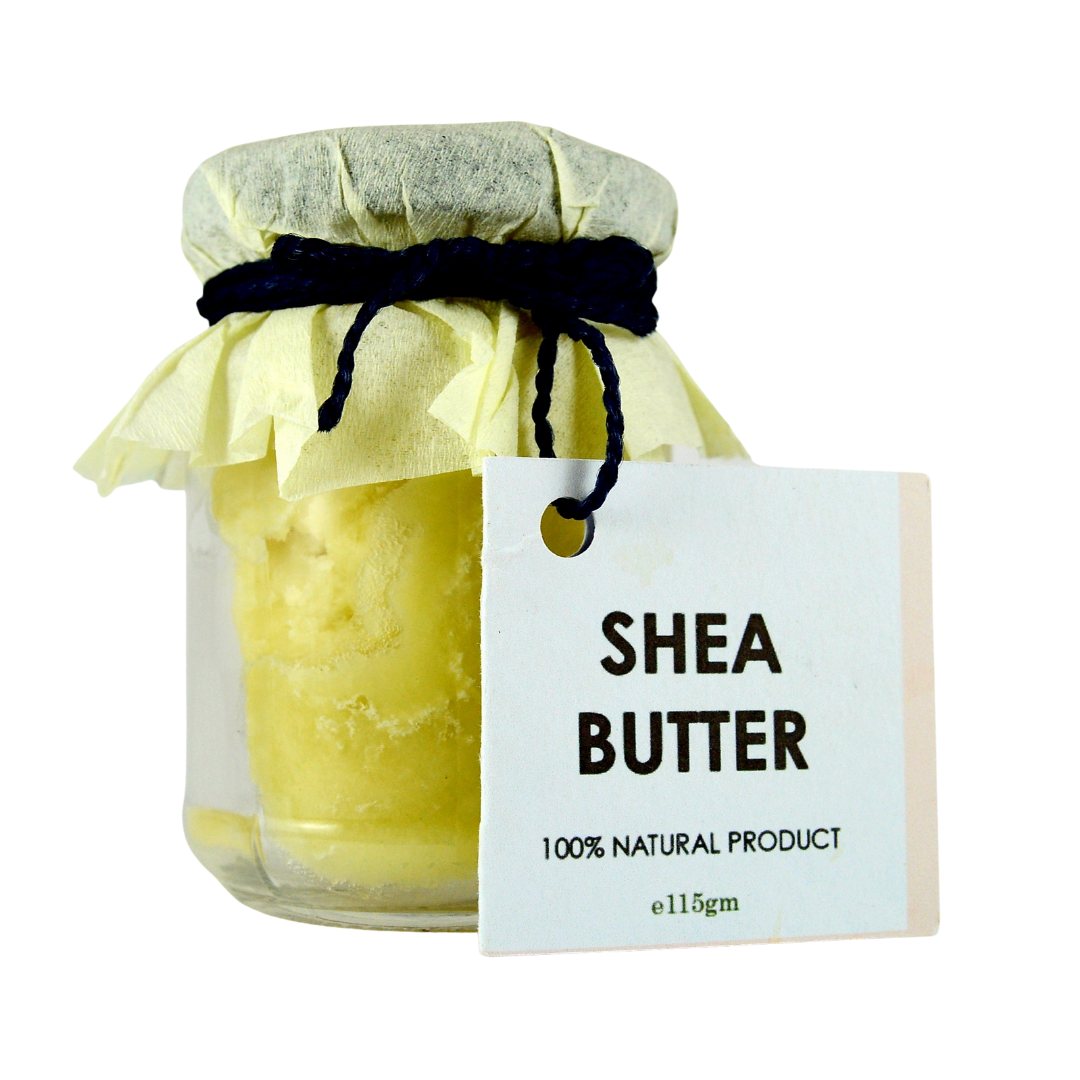Sahara Bodycare
Raw Shea Butter (50gm)
Raw Shea Butter (50gm)
BUY
BUY
Shea butter is fat that’s extracted from the nuts of the shea tree. It’s solid at warm temperatures and has an off-white or ivory color. Shea trees are native to West Africa, and most shea butter still comes from that region.
Shea butter has been used as a cosmetic ingredient for centuries. Its high concentration of vitamins and fatty acids — combined with its easy-to-spread consistency — make it a great product for smoothing, soothing, and conditioning your skin.
Shea butter is typically used for its moisturizing effects. These benefits are tied to shea’s fatty acid content, including linoleic, oleic, stearic, and palmitic acids.
When you apply shea topically, these oils are rapidly absorbed into your skin. They act as a “refatting” agent, restoring lipids and rapidly creating moisture.
This restores the barrier between your skin and the outside environment, holding moisture in and reducing your risk of dryness.
Shea butter contains high levels of linoleic acid and oleic acid. These two acids balance each other out. That means shea butter is easy for your skin to fully absorb and won’t make your skin look oily after application.
The plant esters of shea butter have been found to have anti-inflammatory properties.
When applied to the skin, shea triggers cytokines and other inflammatory cells to slow their production.
This may help minimize irritation caused by environmental factors, such as dry weather, as well as inflammatory skin conditions, such as eczema.
Shea butter has significant levels of vitamins A and E, which means it promotes strong antioxidant activity.
Antioxidants are important anti-aging agents. They protect your skin cells from free radicals that can lead to premature aging and dull-looking skin.
A 2012 study suggests that oral doses of shea bark extract can lead to decreased antimicrobial activity in animals.
Although more research is needed, this could indicate possible antibacterial benefits in humans.
Shea tree products have been established as powerful ingredients to fight skin infections caused by fungi.
While shea butter may not be able to treat every kind of fungal infection, we know that it kills spores of the fungi that causes ringworm and athlete’s foot.
Shea butter is rich in different kinds of fatty acids. This unique composition helps clear your skin of excess oil (sebum).
At the same time, shea butter restores moisture to your skin and locks it in to your epidermis, so your skin doesn’t dry out or feel “stripped” of oil.
Shea butter contains triterpenes. These naturally occurring chemical compounds are thought to deactivate collagen fiber destruction.
This may minimize the appearance of fine lines and result in plumper skin.
Shea’s moisturizing and antioxidant properties work together to help your skin generate healthy new cells.
Your body is constantly making new skin cells and getting rid of dead skin cells. You actually get rid of anywhere between 30,000 to 40,000 old skin cells each day.
By boosting collagen production and promoting new cell generation, shea butter may help reduce what researchers call photoaging — the wrinkles and fine lines that environmental stress and aging can create on skin.
Shea butter can’t be used by itself as an effective sunscreen.
But using shea butter on your skin does give you some added sun protection, so layer it over your favorite sunscreen on days you’ll be spending outside.
Shea butter contains an estimated SPF of 3 to 4.
Shea butter hasn’t been studied specifically for its ability to make hair stronger.
But one
One way to treat dandruff (atopic dermas) is to restore moisture to your dry and irritated
Couldn't load pickup availability
Share

Collapsible content
DETAILS
Provide details like specifications, materials, or measurements.
Add an image in your Collapsible content settings for more visual interest.
TIPS
Share expert tips on how to use this product or pair it with other items.
SHIPPING
List the details of your shipping policy.
SUBSCRIBE TO OUR EMAILS
Be the first to know about new collections and exclusive offers.
